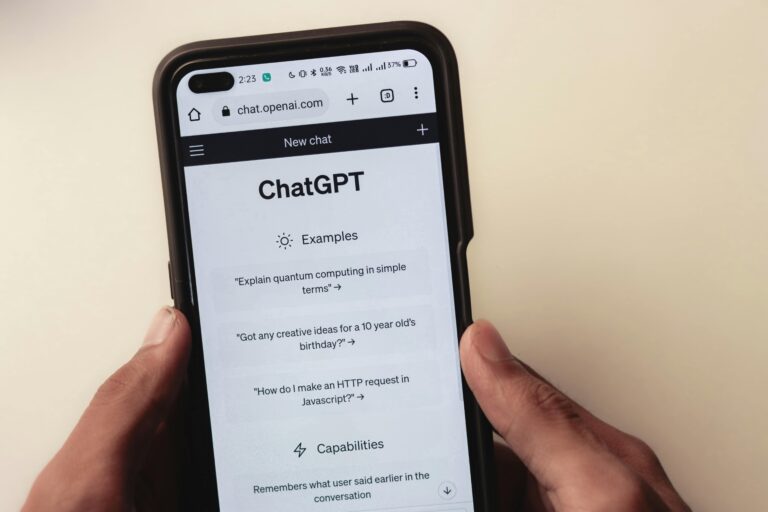How AI Models Actually Pick Their Sources (And Why Your Content Gets Ignored)
AI has been responsible for its share of anxiety in marketers these days. But here’s a new kind of question I’ve been hearing recently: Why did ChatGPT cite that competitor’s blog and not mine? Or worse: Why does Perplexity pull a random Reddit thread instead of my meticulously optimized white paper?
The assumption is that LLMs “pick the best content.” The reality, according to emerging academic research, is so much messier: Models don’t always know which sources they are using, citations are often unreliable, and attribution systems are still in their infancy.
So if you’ve been scratching your head about why your content doesn’t show up, or just curious about where these LLMs are getting their information, here’s a brief look under the hood.
How LLMs Actually Find Information
If Google is like a librarian pointing you to the right shelf, LLMs are more like a friend who read the whole library once, took rough notes, and now paraphrases from memory.
Here’s a simplified version of the process that most LLMs undertake:
- Pretraining: Models like GPT-4 or Claude were trained on enormous datasets—snapshots of the web, books, articles, even code. Think of this as their “long-term memory.” Once something is in there, it can influence answers forever (but it may also be outdated).
- Retrieval-Augmented Generation (RAG): Some models, like Perplexity or Gemini, don’t just rely on memory. They go fetch fresh web pages in real time, then weave those snippets into their answers. This is why you sometimes see citations under their responses.
- Blending Sources: Whether it’s pulling from memory or fetching new content, the model doesn’t just copy-paste. It blends information from multiple places, smoothing over contradictions to sound confident. That’s why it can produce an authoritative-sounding answer that may or may not match any single source.
- Citations as a UX Layer: When you see a link at the bottom of an AI answer, it’s not the model saying, “Here is exactly where I got this fact.” It’s the system bolting on a citation for user trust. Sometimes it’s right. Sometimes it’s little more than decoration.
This helps explain why your brand name or blog post might not appear in an answer: The model’s “memory” may be stale, its retrieval layer may have grabbed something else, or the system may decide another site looks more authoritative for citation purposes.
What the Research is Telling Us So Far — and Its Limits
So how accurate is any of this sourcing, really? This is something that researchers are actively looking into—and, to be honest, the findings aren’t exactly confidence-boosting.
#1) Citations Are Often Unsupported or Contradictory
Wu et al. (2025) introduced SourceCheckup, a framework for assessing whether statements in LLM outputs are properly backed by their cited sources, specifically for the medical field. Their findings are striking: Between 50% and 90% of LLM responses are not fully supported by their cited references—and many times, they are even contradicted. Even GPT-4o with Web Search had ~30% of individual statements unsupported, and nearly half of its responses weren’t fully supported as a whole.
This means that when you see a “citation” under a ChatGPT or Perplexity answer, it’s not a guarantee that the model actually used that content—or if it did, that it truly understood it.
#2) Models Reflect & Reinforce Citation Bias
A recent study by Algaba et al (2025), “How Deep Do Large Language Models Internalize Scientific Literature and Citation Practices?”, explored how LLMs generate scholarly references. The authors found that models systematically favor highly cited, more recent papers with shorter titles and fewer authors — a reinforcement of the “Matthew Effect” (i.e., “the rich get richer”) in citation practices.
In other words: LLMs might well prefer already popular, often-cited sources over lesser-known but potentially more relevant content. Even when your content is credible, it might be overlooked because it doesn’t carry the “signal weight” of a high-status domain or paper.
#3: Attribution Favors the Appearance of Authority
A 2024 study by Abolghasemi et al., “Evaluation of Attribution Bias in Generator-Aware Retrieval-Augmented Large Language Models,” explored how metadata can influence which sources LLMs choose to attribute. The researchers tested what happens when you add or modify authorship cues (for example, labeling a document as “written by a human”). The results were telling: Attribution accuracy shifted by as much as 3–18% depending on the metadata, with models more likely to credit sources that carried explicit human or authority signals.
In other words…not all content is evaluated on equal footing. An authoritative-looking white paper from a Fortune 500 company may get the nod over a boutique blog post, even if the smaller piece is clearer or more relevant. Attribution, in practice, isn’t purely about truth or utility—it’s also shaped by surface signals of “trustworthiness” baked into the data.
Implications for Marketers
So, what does all this mean if you’re trying to get your content cited (or at least noticed) by AI systems? A few clear lessons emerge:
- Don’t take a single citation at face value. Studies show that as many as 90% of LLM “citations” don’t fully support the claims they’re attached to. If a dashboard says you were cited in ChatGPT, that’s a nice signal…but not proof that the model really “trusted” your content.
- Look for consistency across tools and models. Because attribution is probabilistic, you’ll get more confidence when you see your content appear across prompts, across time, and across multiple LLMs (say GPT-4o and Gemini). One mention is noise. Repetition is signal.
- Recognize the bias toward authority signals. Research shows that metadata and “trust cues” like clear authorship, institutional affiliation, and domain authority can swing attribution rates by double digits. That means your content may lose out not because it’s weaker, but because it doesn’t look as authoritative to the model.
- Build content that’s hard to ignore. Techniques like SelfCite suggest that models are more likely to cite when a claim can’t stand on its own without the underlying text. For marketers, that means crafting content where key facts, stats, or definitions are cleanly stated and attributable in their own right—not buried in long paragraphs.
Yeah, OK, But So What Should Marketers Actually Do?
This isn’t the part where I tell you to “just write great content.” You should already know that by now. Outside of that, if you want to maximize your odds of being surfaced and cited by AI, here’s where to start:
- Structure matters. Make key claims bite-sized: Short sentences, bullet points, clear headers. The finer-grain attribution methods under development (like LAQuer) are more likely to grab precise fragments than whole essays.
- Show your receipts. Link to credible sources, cite data, and include publication details. If metadata influences attribution, then giving your content a strong “signal of authority” makes it harder for models to ignore.
- Think repetition and reinforcement. Publish clusters of related content, interlink pages, and keep updating. If models are probabilistic, increasing the surface area of your claims raises the odds you’ll be in the mix.
- Track direction, not perfection. Use AI visibility dashboards to spot trends, not to measure exact share-of-voice. If multiple tools are showing your mentions ticking upward, you’re likely moving in the right direction, even if they disagree on the details.
Conclusion: Citations Are a Game of Signals, Not Truth
The emerging research is clear: current LLM attribution is shaky at best, and biased at worst. Models often cite sources that don’t fully support their answers. Attribution is probabilistic, not exact. And metadata cues, not just relevance, can decide who gets credit.
For marketers, that’s both frustrating and empowering. Frustrating, because the playing field isn’t level. Empowering, because you can influence the signals that models pay attention to. By structuring content for clarity, signaling authority, and focusing on consistent presence, you increase your odds of being noticed in a noisy, probabilistic system.
Don’t think of LLM citations as truth. Think of them as hints. And in a world where hints can shape perception, being one of the sources that “looks” authoritative might just be enough to win.
Brandon N. Towl is an SEO strategist and content expert who helps companies stand out in both traditional search and emerging AI-driven discovery. He is the founder of Words Have Impact, a content agency, and Human Driven Understanding, a consultancy focused on buyer insights and strategy.






